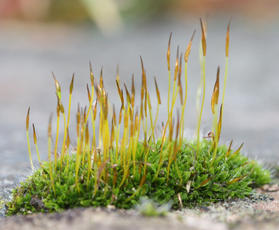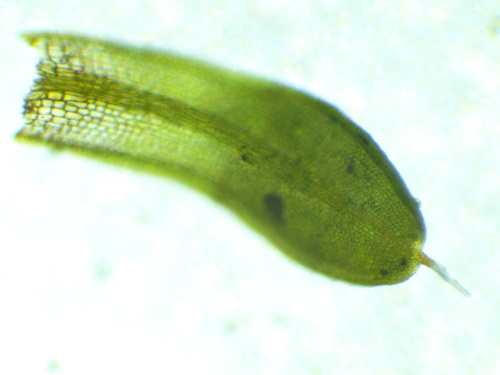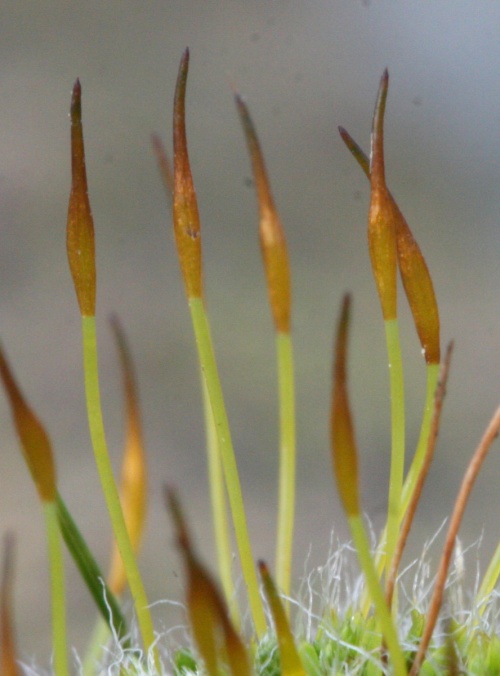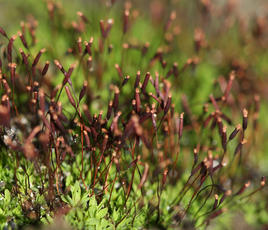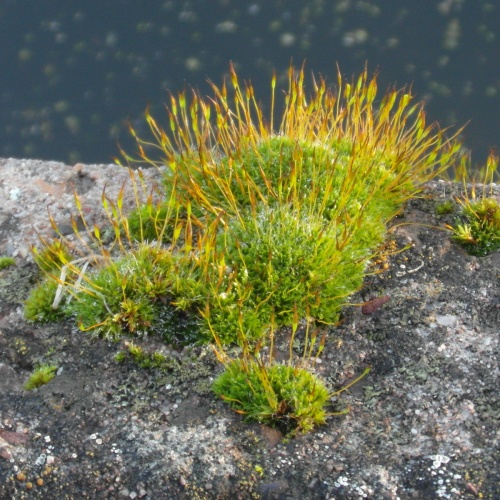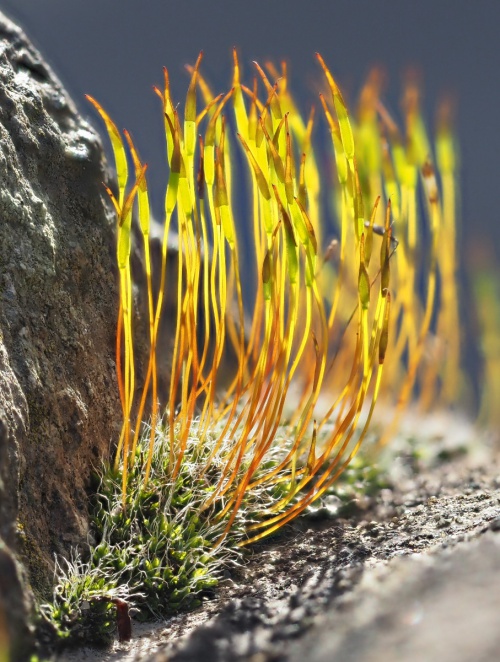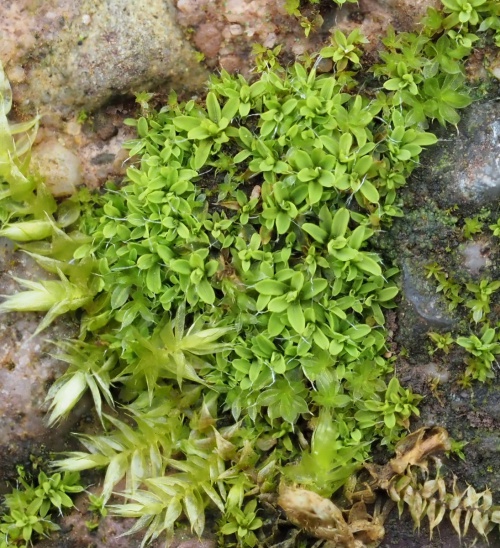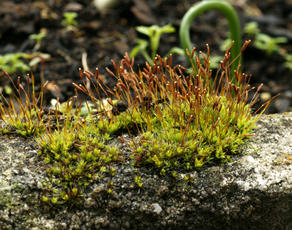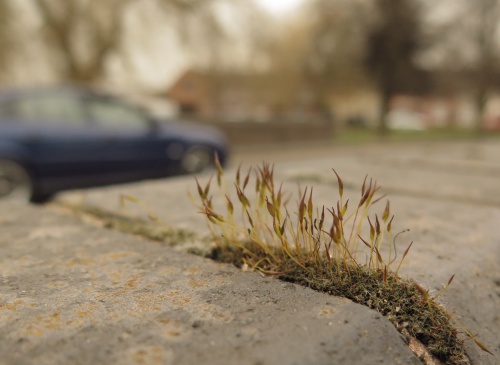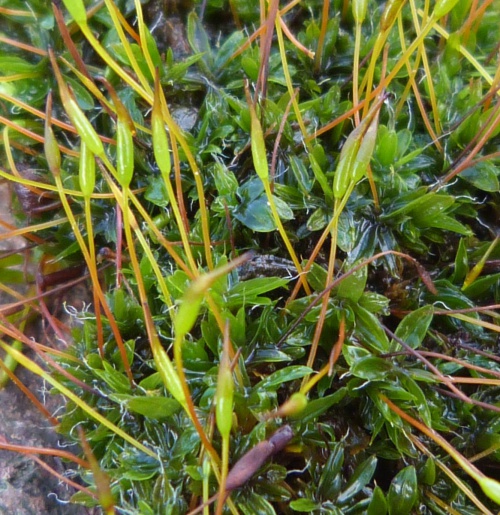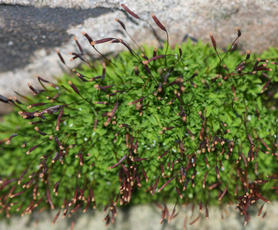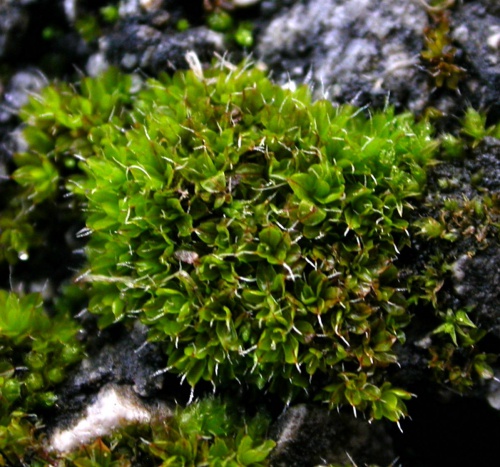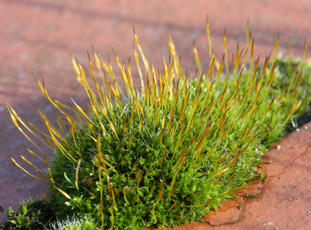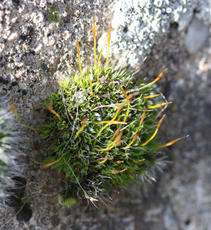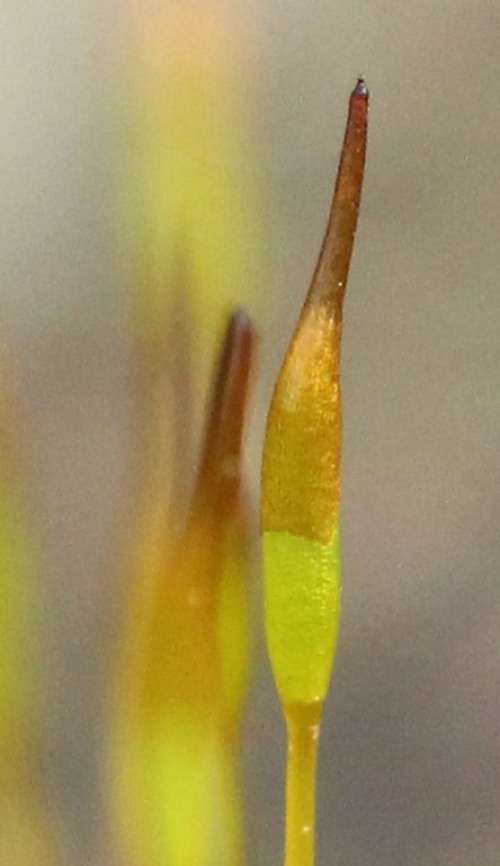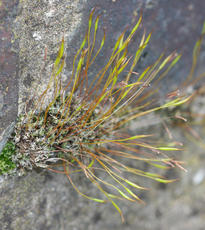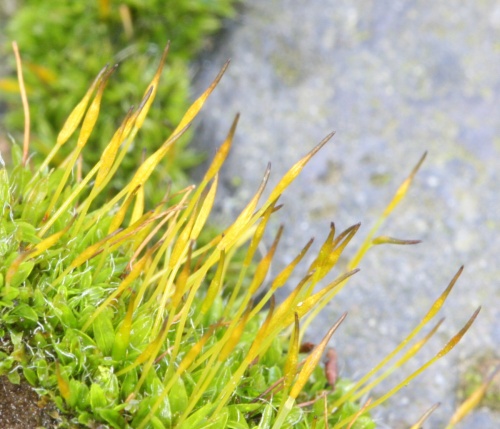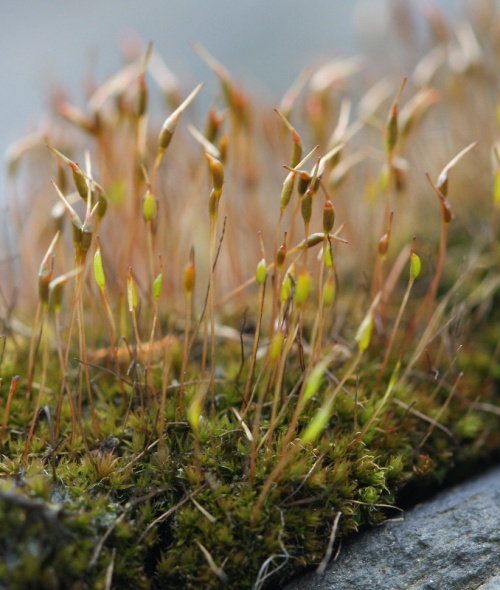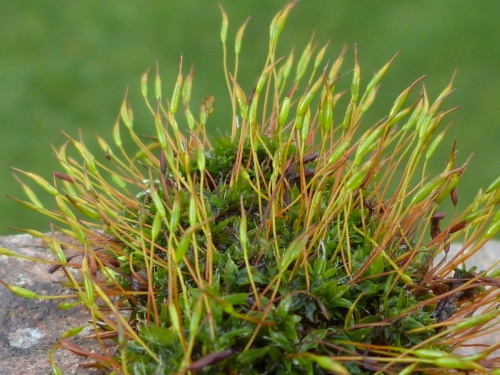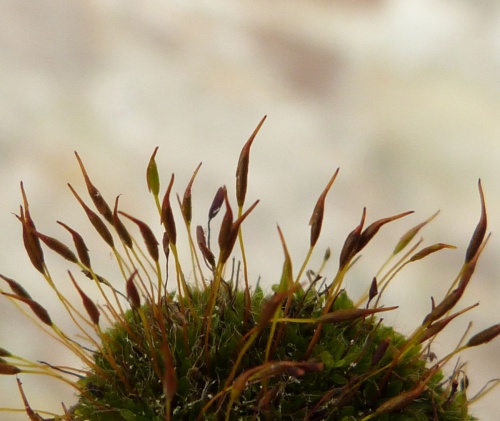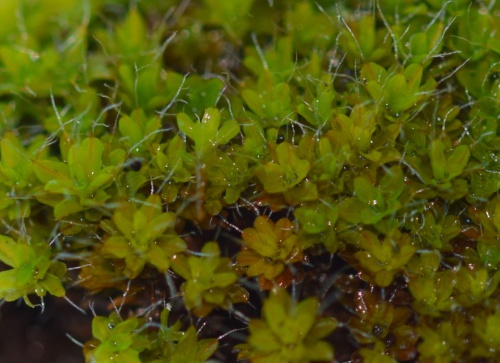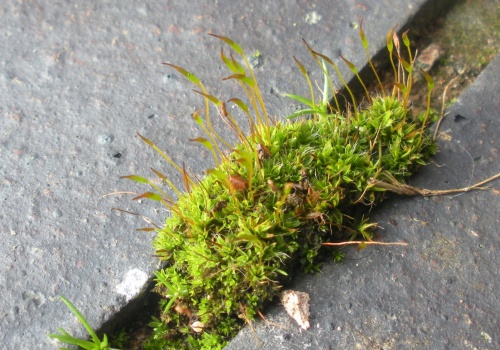Wall Screw-moss - Tortula muralis
T. muralis is one of the first (and commonest) mosses that beginners will find. It grows in patches, tufts and neat cushions less than 1 cm tall. A long, smooth, silvery, excurrent nerve projects from the rounded leaf tip, making the moss look hoary grey when dry. The tongue-shaped leaf blade is 2 to 3.5 mm long, and twists and curls when dry, but the leaves spread away from each other when moist. The margins are recurved almost to the tip. The less common var. aestiva has a very short, excurrent green nerve. Narrowly cylindrical capsules develop from spring to autumn. They are held erect on a 1 to 2 cm long, purple seta, with a long peristome twisted into a spiral.
Capsules are characteristically upright.
T. muralis is the commonest moss on many mortared or base-rich walls – both of brick and stone – and can tolerate some shade. It also grows on concrete, roof tiles and other man-made structures, as well as outcrops of natural, base-rich rock, and much less commonly on trees and wood.
Widespread and common in Britain.
Common in Leicestershire and Rutland.
Leicestershire & Rutland Map
Enter a town or village to see local records
MAP KEY:
Yellow squares = NBN records (all known data)
Coloured circles = NatureSpot records: 2025+ | 2020-2024 | pre-2020
UK Map
Species profile
- Common names
- Wall Screw-moss
- Species group:
- Mosses & Liverworts
- Kingdom:
- Plantae
- Order:
- Dicranales
- Family:
- Pottiaceae
- Records on NatureSpot:
- 134
- First record:
- 10/11/1991 (Dennis Ballard)
- Last record:
- 03/03/2025 (Cooper, Barbara)
Total records by month
% of records within its species group
10km squares with records
The latest images and records displayed below include those awaiting verification checks so we cannot guarantee that every identification is correct. Once accepted, the record displays a green tick.
In the Latest Records section, click on the header to sort A-Z, and again to sort Z-A. Use the header boxes to filter the list.


